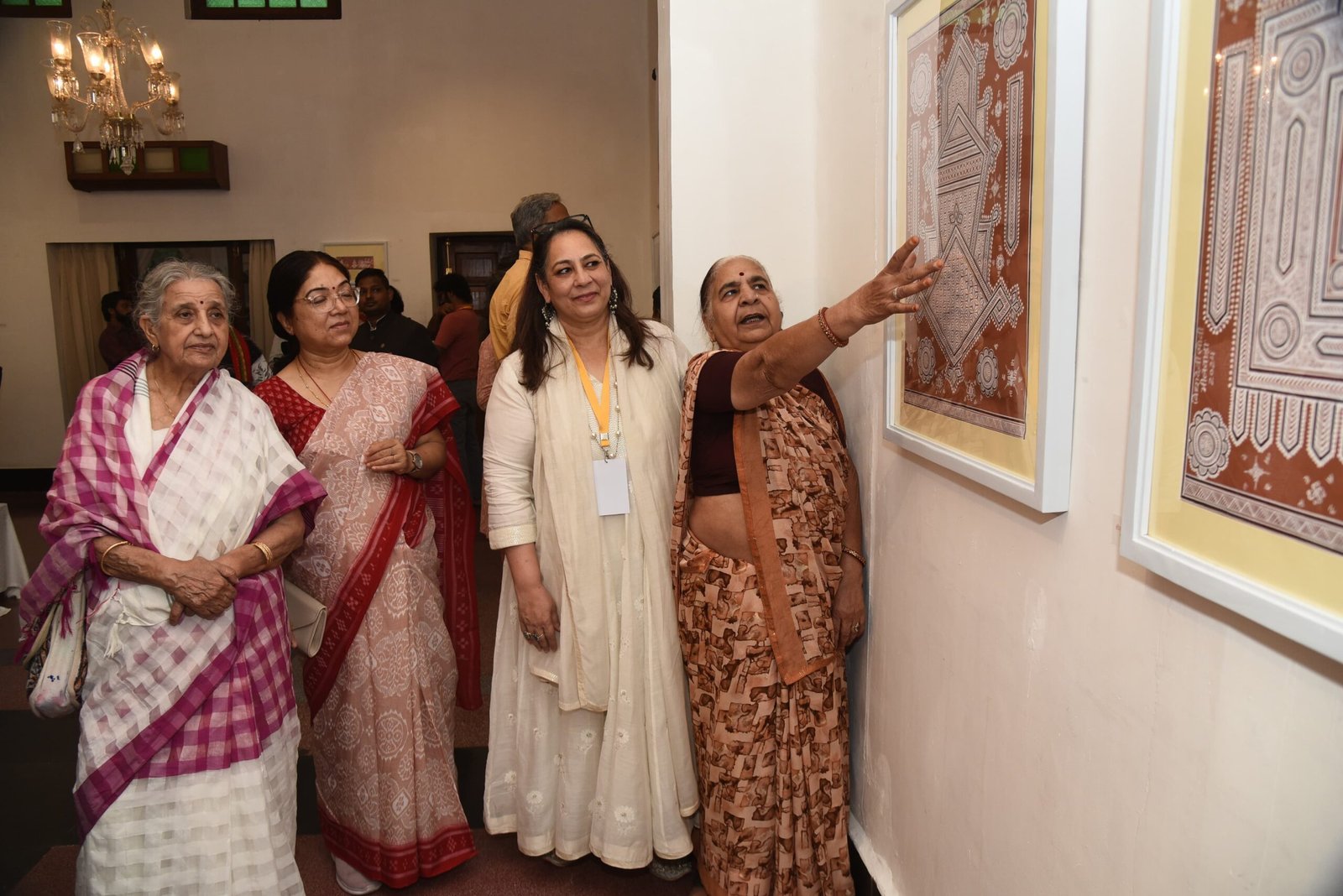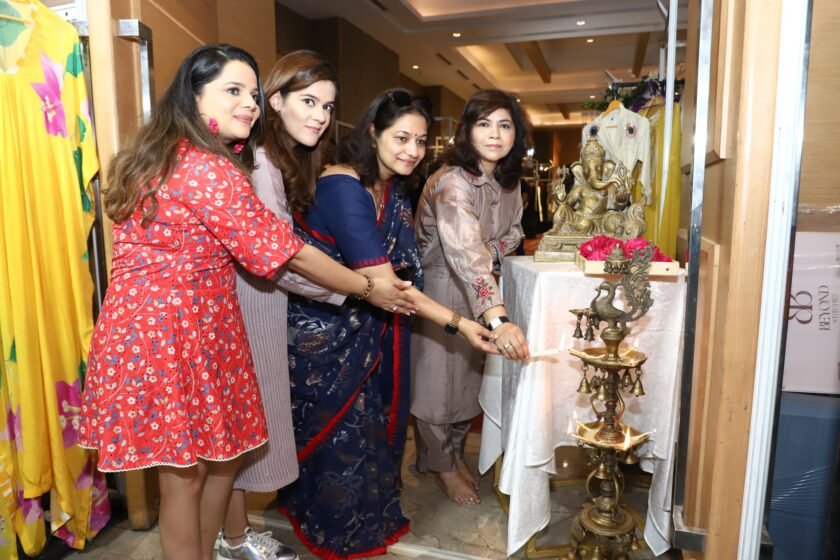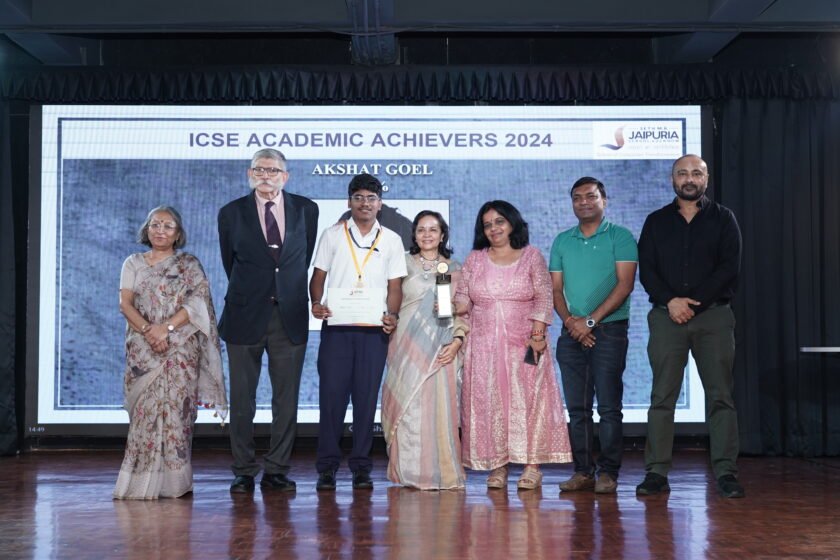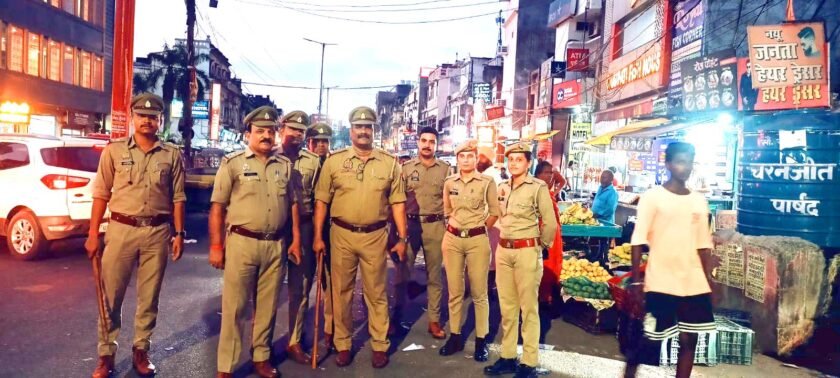Lucknow: After the three-day All India Folk and Tribal Art Camp, the folk art festival, the exhibition of the artefacts made in the camp was organized at Saraka Art Gallery of Saraka Hotel located on Mall Avenue of the city. The exhibition was inaugurated and all the artists were honored by the chief guest Padmashree Dr. Vidya Vindu Singh (senior folk litterateur) and Prof. Mandvi Singh (Vice Chancellor, Bhatkhande Sanskriti Vishwavidyalaya, Lucknow). On this occasion, Padmashree Vidya Vindu Singh said that these arts are alive. We all should come forward to Both encouraged them. To keep these arts alive, they should be encouraged and the artists should also get their basic facilities. There is a need to enhance and decorate them. These arts are connected with our life and traditions.
The new generation should learn it, only then this art will be able to progress further. In the same sequence, Prof. Mandvi Singh said that art is what makes us special. Saving the arts means saving our life and culture. The confluence of all arts is the same. All together represent our culture. This effort to bring forward art and artists is quite commendable.
Curator Dr. Vandana Sehgal said that every state of India has its own special style and method of art which is known as folk art. Apart from folk art, there is another form of traditional art which is prevalent among different tribes and rural people. It is classified as tribal art. The folk and tribal arts of India, despite being very traditional and simple, are so alive and impressive that they automatically give an idea of the rich heritage of the country.
The traditional arts or crafts associated with our cultural roots are gradually dying out as the context is disappearing with new ethos and new technology in modern times. This art is a way of life. As the way of life is changing, the need for these creations is also increasing. This camp is an effort to bring endangered arts, crafts and their artists to the fore.
While giving details of the exhibition, arts curators Bhupendra Asthana and Ratnapriya Kant said that in this exhibition, a total of 11 artists from four states of the country, Uttar Pradesh, Rajasthan, Assam and West Bengal, displayed their works made in different folk art styles and mediums.
The artists included in it are Khagen Goswami from Majuli, Assam, who is an artist of Majuli Mask whose medium is bamboo, clay, cow dung and natural colors, Diganta Hazarika, a Sanchi Pat painter from Assam, who is an artist of manuscript painting and the medium is the bark of a special type of tree and natural colors, two other artists from Assam are Gandhi Paul who is an artist of saltpeter painting and his medium is terracotta plate and fabric color, while Dulal Malakar who is an artist of Solapith painting also has the medium of paper prepared from the bark of a tree called Sola. There are 3 artists from West Bengal, including Seramuddin Chitrakar who is an artist of Patachitra and his medium is paper, cloth and natural colors. Bholanath Karmakar is the only artist of Sherpai and his medium is wood and brass, Vrindavan Chanda is a lakh doll artist, his medium is clay terracotta toys and lakh. There are also 3 artists from Rajasthan, among them Vidya Devi, a 75-year-old female artist of Mandana art, whose medium is paper and color, Dinesh Kumar Soni, an artist of Pichwai art, whose medium is cotton cloth and natural colors, Abhishek Joshi, an artist of Phad painting. And he also works through cotton cloth and natural colors and finally Ram Shabd, a native of Azamgarh, Uttar Pradesh, is a well-known senior artist of Kohbar art and his medium is paper, canvas and color.
Two coordinators of the camp, Dheeraj Yadav from Uttar Pradesh and camp coordinator Binoy Paul from Assam said that in this camp there are four types of folk art artists of different genres from Assam which are Shor Chitra from Silchar Assam, Majuli Mask from Majuli Assam, Sanchi Pat. Artists of Sola Peeth, Kohbar, Pichwai, Mandana and Phad have come from Dhubri Assam.
All these artists are preserving and keeping alive such arts which have been prevalent for many generations, despite the difficulties faced in today’s changing environment. There is a need to encourage these traditional arts to preserve them in the society. Coordinator Dheeraj Yadav said that this exhibition will remain open for art lovers to view till 30 May 2024.




